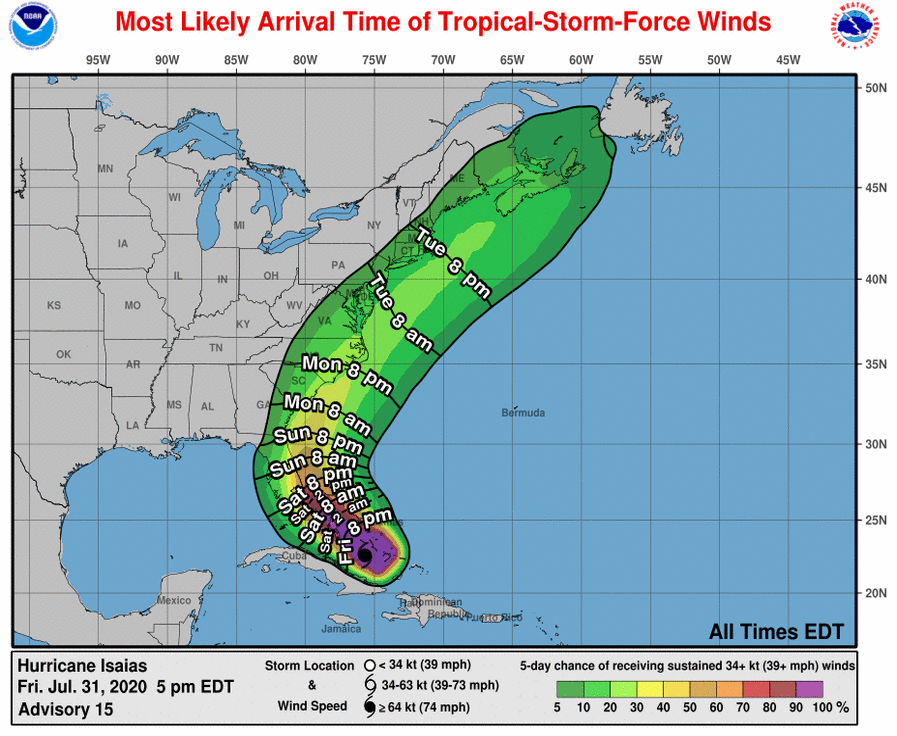Hurricane Isaias Could Bring Heavy Winds, Rainfall to Long Island


Officials are preparing for the possible impacts of Hurricane Isaias on Long Island, the first substantial threat this hurricane season.
Currently a Category 1 hurricane, Isaias is continuing to gain strength as it moves closer to the Florida coastline on Friday evening. While there is a great deal of uncertainty, current models show the storm may move up the coast, bringing heavy rainfall and tropical storm-force winds to Long Island, New York City and the lower Hudson Valley early next week.
After the storm crosses Central Bahamas Friday night, forecasters expect it to head east to Florida on Saturday and Sunday. If current tracks hold, then it could move up the East Coast, reaching the New York City-metro area Monday night into Tuesday.
According to the National Weather Service, the most likely impacts will be high surf and dangerous rip currents at the ocean beaches. The National Weather Service has not yet issued any watches, warnings or advisories for New York, but that could change later this weekend.
“We cannot predict at this moment what this is going to look like here so it’s just better to be ready for anything,” Nassau County Executive Laura Curran said earlier on Friday.
If evacuations are necessary, Long Island officials said they are prepared to deal with COVID-19 social distancing requirements in emergency shelters.
Governor Andrew Cuomo is urging all New Yorkers to ensure they are prepared for the storm. “New Yorkers are far too familiar with the destructive powers of these storms, and I am urging the public to be prepared and stay alert as conditions continue to develop throughout the weekend,” he said.
Cuomo ordered state agencies to prepare for an emergency response. He said PSEG utility crews will stage trucks and supplies Sunday at Bethpage State Park in anticipation of the storm.
The New York State Division of Homeland Security and Emergency Services’ Emergency Operations Center, which remains activated due to the COVID-19 pandemic, will monitor weather conditions, and coordinate state response operations.
The State Department of Transportation is prepared to respond with large dump trucks, large loaders, chippers, excavators, vacuum trucks with sewer jets, and tree crew bucket trucks.



